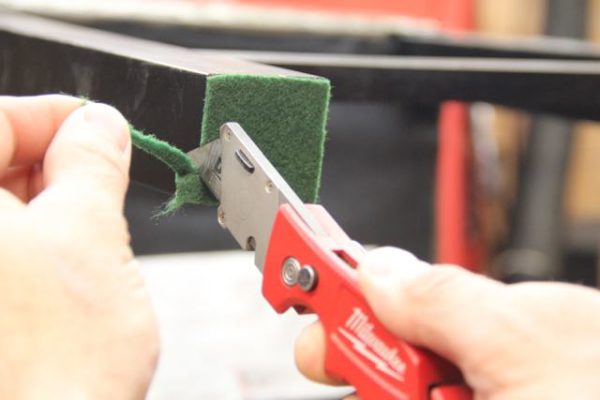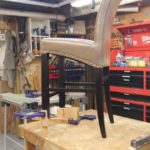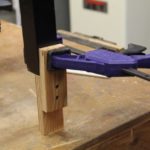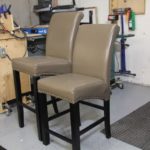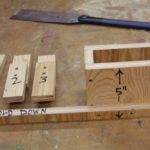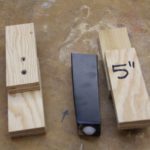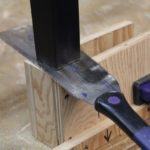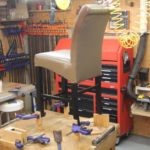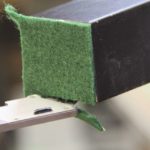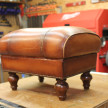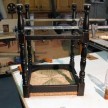How to Cut Down Bar Stool Legs
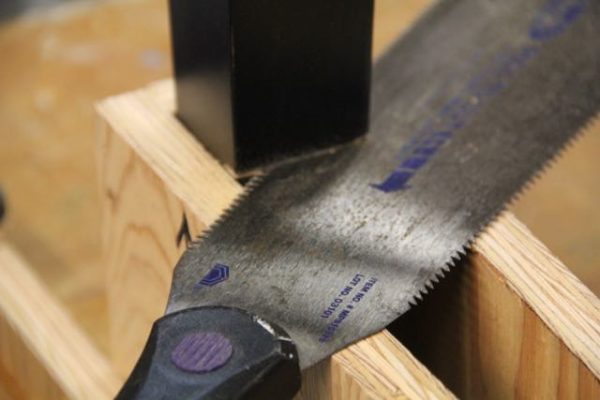 Cutting Bar Stool Legs To Counter Height Stools
Cutting Bar Stool Legs To Counter Height Stools
One of the joys, and sometimes frustrations with kitchen remodeling is trying the perfect height stool to match your brand new kitchen counters. As a carpenter I’m often asked if I would be willing to undertake cutting bar stools down to counter height stools. I always say yes, since its an easy task when you use a cutting jig.
Bar Counter vs. Kitchen Counter Heights
Many bar heights are 42” and most kitchen counter heights are around 36,” and some are even shorter if they have a 4” skirt trim supporting a granite peninsula of overhang.
Many stools in stores and catalogs are often at that bar-stool height, which are too high to use comfortably with kitchen counter overhangs.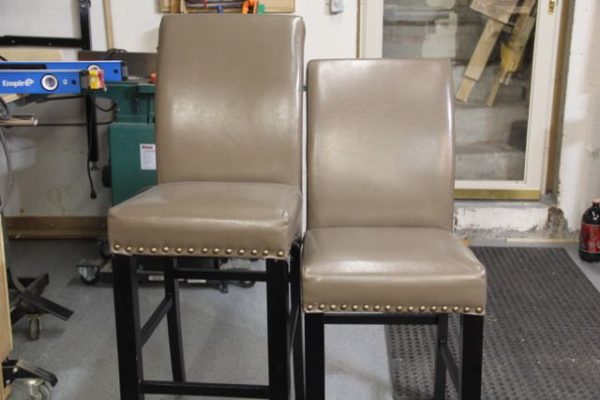
If you can’t find a kitchen height stool or simply fall in love with a bar height stool and MUST HAVE IT! Then you’re going to have to cut it down.
Cutting Bar Stool To Fit Under A Kitchen Counter
Trimming bar stool legs down to fit under an existing kitchen counter is a great DIY opportunity to show off your shop skills and one that should take no more than a half hour per stool and some basic tools.
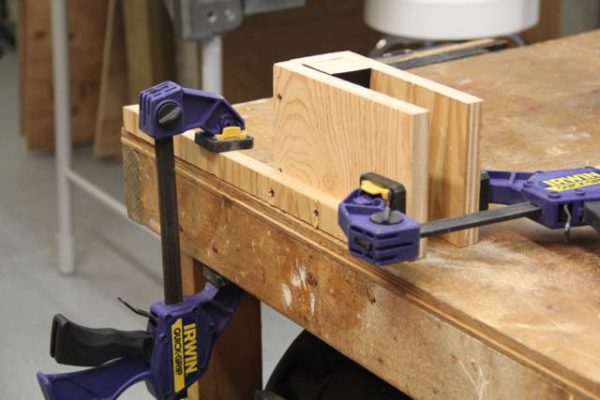
Things You Will Need
- Plywood, pine or other wood material
- Some screws
- Table, power or handsaw
- [Note – you can purchase wood at a lumberyard already the width you need and forego needing a table saw.
- 5 Clamps
- Pull saw
- Sand paper
- Stain marker or markers
- Felt or a floor glides
 Consistent, Clean CutsIn order to get consistent and clean cuts when cutting bar stool legs, you will need to rely on a cutting jig. Put away the pencil and make a cutting jig which will serve as a guide for you saw. Jigs help keep you honest and ensure that all four legs are cut at the same exact height – There’s no going back a second time to fix this.
Consistent, Clean CutsIn order to get consistent and clean cuts when cutting bar stool legs, you will need to rely on a cutting jig. Put away the pencil and make a cutting jig which will serve as a guide for you saw. Jigs help keep you honest and ensure that all four legs are cut at the same exact height – There’s no going back a second time to fix this.
Making A Cutting Jig
I used scrap plywood and ripped it to the height that I wanted to cut off the stool legs. In my situation, I ripped the plywood to 5” wide. Once ripped I then cut it into 3 pieces to make my cutting jig.

The “legs,” or long part of my jig is an arbitrary size, I left it long to allow the saw the rest on the edge and use it as a guide. The short part of the jig is cut to the thickness of the table leg.
I also added a long clamping strip which I found helpful for holding the jig, and stool still when cutting. This clamp strip can be clamped or screwed down to the workbench.
Note: Some chairs and stools have angles or flares in the leg. If desired, the small part of the cutting jig can be attached to the two “legs” at an angle to better fit the leg flare
Make a Support Jig
I used cut offs of the 5” ripped plywood and half-lapped them to make supports or “stilts,” for the legs once I cut them down. The support stilts are clamped to the legs after cutting them down, and keep the chair from wobbling or falling down while you’re dealing with the next cut.
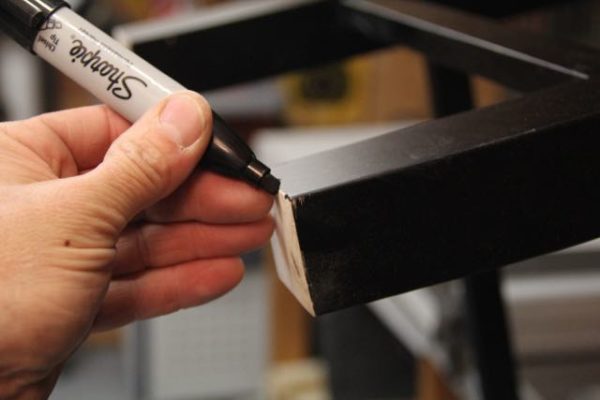
You will need 3 supports to cut one chair.
Note – the rear legs on my stool were wider than the front. To compensate for that thickness I used 3 pieces of ¼” Luan plywood to fill in the space between the stool leg and the cutting jig. [see photo]
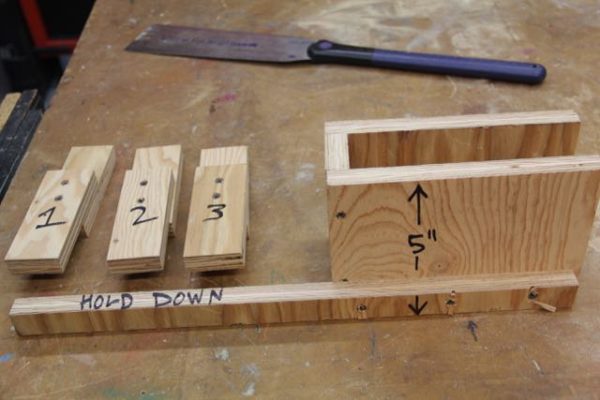
Cutting Bar Stool Legs To Counter Height Steps
- Place the chair or stool on a level flat surface
- Slide the cutting guide jig onto the leg
- Clamp the jig at the end of the legs, which creates a pinching pressure and holds it tight.
- Clamp down the clamping strip
- Use a pull saw and cut the leg
- Remove clamping guide and apply a support stilt with a clamp
- Repeat this step three more times.
- Use sand paper to break the sharp edges and flatten any irregularities
- Apply protective felt or chair glide pads to protect the floor.
- Use a marker or stain pen to touch up any scratches
Summary
Using a cutting jig and supports is the BEST way to ensure quality, accurate and consistent cutting of chair legs. Take the time to make these jigs, and do it right the first time!